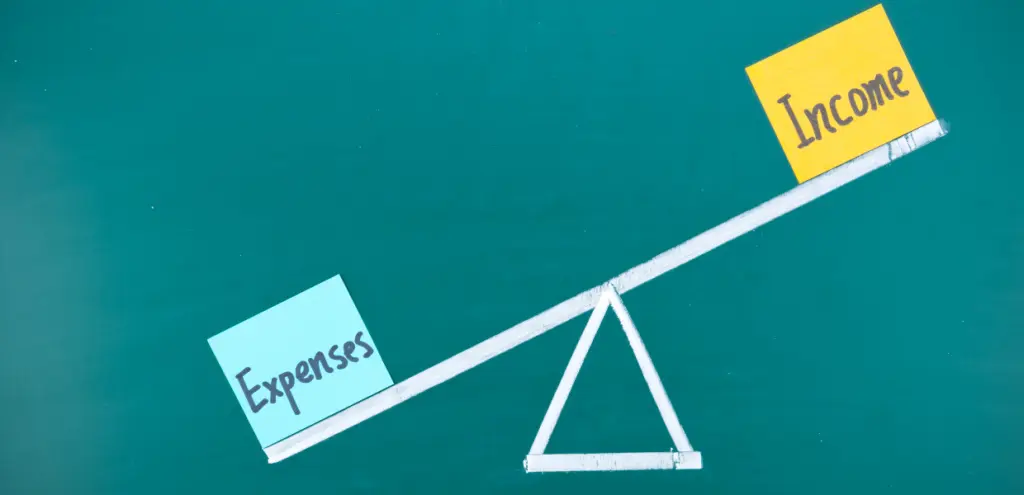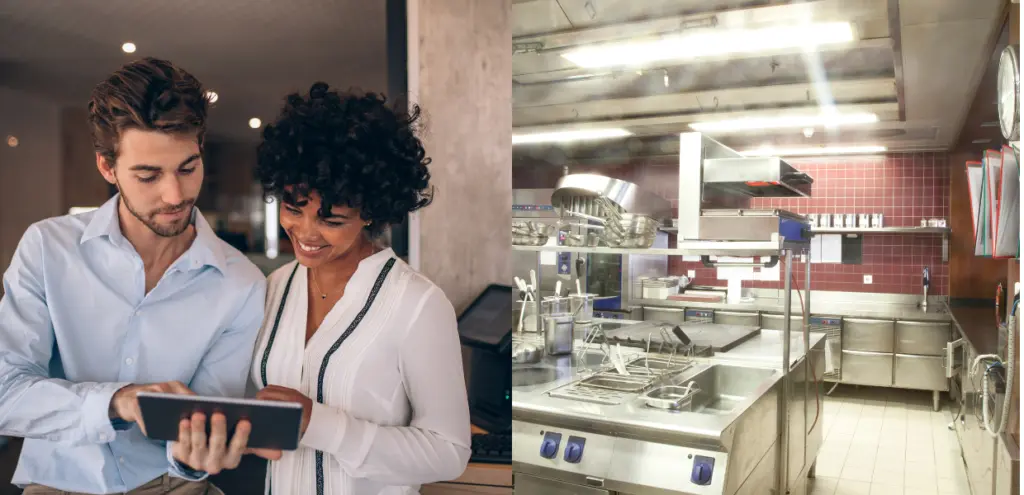All Articles
All You Need to Know About Restaurant Finances

Opening and running a restaurant is not child’s play. Whether it is a fast-food restaurant or a fine-dining establishment, It involves extensive work and meticulous management, with restaurant finances being one of the most crucial elements. Proper restaurant financial management is vital, as it directly impacts the restaurant’s success or failure. If you understand the importance of restaurant finances and want to learn how to manage them better, this article will help you.
Here are the three things you will learn from this article:
- What Is Understood by Restaurant Finances
- Why Is It Essential to Manage Restaurant Finances
- How to Manage Restaurant Finances
What Is Understood by Restaurant Finances
Restaurant finances refer to the comprehensive management of a restaurant’s financial activities, including revenue generation, cost control, budgeting, financial reporting, and profitability analysis. This encompasses all aspects of handling income from sales, managing expenses such as food, labor, and overhead costs, maintaining financial statements, and ensuring the restaurant business’s overall economic health and sustainability.
Why Is It Essential to Manage Restaurant Finances
As I said before, restaurant finance management directly affects a restaurant’s success, but there are many other reasons for this activity’s importance. Below is a list of the main reasons.
- Data-Driven Decisions: Many restaurant decisions involve money. Effective restaurant financial management provides valuable information for decisions related to restaurant operations, staffing, investments in equipment, marketing strategies, and other aspects essential to the restaurant’s smooth operation.
- Taxes and Regulatory Requirements Compliance: Proper financial management helps restaurants maintain accurate financial records. These records are crucial for complying with tax laws and regulations, thus avoiding legal issues and penalties.
- Costs Control: Restaurant finance management helps restaurants to be aware of their expenses regarding food ingredients, labor costs, and other aspects. This way, they can avoid overspending and maintain restaurant profitability.
- Setting and Achieving Financial Goals: Financial management helps establish realistic financial objectives and track progress toward achieving them.
- Long-Term Sustainability and Growth: Effective financial management supports long-term planning, sustainability, and growth by ensuring resources are allocated efficiently.
- Creating Realistic Budgets and Financial Projections: Restaurants need financial data to create realistic budgets for the year ahead and make realistic financial projections regarding expenses and revenues. Restaurant finance management provides this data.
- Overall Health Control: Regular financial analysis provides a clear picture of the restaurant’s economic health, enabling timely interventions if issues arise.
How to Manage Restaurant Finances

After understanding restaurant finances and the importance of effective financial management, it’s time to explore a few tips for properly managing restaurant finances.
Control Expenses
One of the first things to consider for effective financial management is controlling your restaurant’s expenses. Critical expenses to monitor include:
- Restaurant Food Costs: These primarily include the expenses for ingredients needed to prepare dishes. Food costs represent a significant portion of your budget and should be closely monitored.
- Restaurant Labor Costs: Labor costs cover staff wages and technology used to automate tasks previously performed by humans. Strive to minimize these expenses through efficient team management and strategic use of technology.
- Restaurant Marketing Costs: These expenses can fluctuate from month to month, but employing various strategies can help reduce costs while still achieving excellent results.
- Restaurant Overhead Costs: These expenses, such as rent, utilities, and taxes, must be paid regardless of whether your restaurant is open.
To control all these expenses, you have to do three things mainly:
- Set a Budget and Make Regular Audits
The best way to monitor all these expenses is to set a budget. Start by assessing your income, costs, and expected expenses in each area. This will help you determine how much you can allocate to different categories, identify your operating costs, establish available funds for each operation, and evaluate your restaurant’s earning potential. Additionally, setting a budget will clarify your priorities and goals, helping you ensure they are effectively addressed.
However, controlling expenses becomes difficult if you set a budget but do not check it regularly. By regularly reviewing your budget, you can effectively manage restaurant operations. For example, if a piece of equipment malfunctions, it may take your staff longer to complete tasks, indirectly increasing labor costs. Knowing you can allocate more to purchase new equipment will help you reduce labor costs and improve efficiency.
- Minimize Food Costs
As previously noted, food costs are a significant expense for restaurants, with food waste being a major contributor to these elevated costs. To minimize these expenses, restaurants should implement effective waste reduction strategies and optimize inventory management. A well-known method for reducing food waste is the FIFO (First-In-First-Out) approach, which ensures that older ingredients are used before newer ones.
Regarding inventory management optimization, the most effective solution is to use inventory management software. This system helps restaurants track their inventory, including food and beverage stocks. It monitors available stocks, alerts staff when ingredients or drinks are low, and, with the aid of AI technology, predicts when your restaurant needs new supplies. When integrated with various suppliers, it can even automate the ordering process. With this system, you can ensure you do not buy more than you need.
- Minimize Labor Costs
Like food costs, labor costs constitute a significant expense for restaurants. Effective financial management aims to minimize these costs without compromising service quality. An important factor driving high labor costs is the employee turnover rate, currently around 75%. Reducing this turnover rate is essential for controlling labor costs and maintaining a stable, experienced workforce.
To reduce the turnover rate, consider implementing the following strategies:
- Offer appealing wages that meet or exceed industry standards to satisfy employees’ financial needs.
- Ensure fair scheduling so employees have balanced workloads, avoiding both overwork and underwork.
- Reward employees for their excellent work through recognition programs, bonuses, and other incentives to boost morale and loyalty.
Another effective way to reduce labor costs is to ensure your staff is well-trained in their specific roles. This training helps streamline task execution, decreasing the time required for various activities and, consequently, lowering overall costs.
In addition to these strategies, leveraging technology is another effective way to lower labor costs—something I will explore in more detail later. For now, it’s worth noting that technology can efficiently handle specific tasks at a lower cost than salaries.
Monitor Cash Flow
Simply put, cash flow encompasses the money that enters and exits your restaurant. Monitoring these activities helps restaurant owners and managers know how much money is available. This is one of the most basic yet crucial tasks for proper restaurant finance management. Understanding your restaurant’s cash flow will help you make critical financial decisions, ensure you have enough money to operate, pay bills, invest in growth, and assess the restaurant’s economic health.
While a budget provides direction on how much to spend and on what, a cash flow statement reveals the reality of your spending, what you are spending money on, and how much money is coming into your restaurant. You must maintain and monitor a cash flow statement to keep track of this reality.
Evaluate Reports Daily

A few restaurant reports have been mentioned so far, but if restaurant owners or managers do not take the time to evaluate restaurant reports, it’s like having gauges on a car’s dashboard that no one is looking at. The car can notify the driver of engine problems, but if he does not check the problem in time, he will only be aware of the engine problems when the car stops completely. To demonstrate effective restaurant management, you must know whether it is thriving or struggling. The key to obtaining this information is by thoroughly evaluating the reports. But what are the reports you must evaluate? These are:
- Food and beverage sales report
- Prime cost report
- Restaurant inventory report
- Profit and loss statement
- Cash flow statement
Each of these reports provides specific information to help you understand your strengths, identify areas for improvement, and plan for the future. For instance, a food and beverage sales report can enhance your restaurant’s promotion strategy by revealing which items sell well and which do not. To gain a deeper understanding of these reports and their benefits, read this article: Understanding Restaurant Financials & Data.
Create a Safety Net
Unexpected events can occur in every aspect of life, and restaurants are no exception. According to a 2021 study, 90,000 restaurants were permanently or temporarily closed due to the unforeseen impact of the COVID-19 pandemic. Given that similar disruptions can happen at any time, the best measure restaurants can take is to establish a safety net to continue operating in uncertain circumstances.
Most experts advise restaurants to create a safety net that will enable them to continue operating for three to six months. With this strategy in place, restaurant owners and managers can alleviate financial pressure and focus on developing a plan for success in uncertain situations.
Leverage Restaurant Technology and Equipment

Nowadays, restaurant technology is becoming increasingly popular in the industry. Two main factors drive this trend: technology can optimize nearly every aspect of restaurant operations based on the restaurant type and help reduce labor costs by decreasing the time required for tasks or lowering the number of staff needed.
For example, online ordering software with mobile apps or websites is an ideal solution if a restaurant offers delivery or wants to handle pick-up orders. To cut down on staffing costs, restaurants can implement self-ordering kiosks or QR code table ordering, which reduces the need for waitstaff. Additionally, modern point-of-sale systems enable restaurants to process orders more quickly and accurately. To learn more about how restaurant technology can benefit your establishment, check out this article: “12 Types of Restaurant Technology”.
The same applies to restaurant equipment. When it is of high quality, it can significantly reduce the time staff need to prepare food and perform various tasks. For instance, imagine the absurdity of replacing vacuum cleaners with brooms for cleaning—such a scenario would drastically increase the hours required for maintenance. Therefore, technology and restaurant equipment play a significant role in adequately managing restaurant finances.
Use Accounting Software
Accounting can be done using pen and paper, Microsoft Excel, or even some point-of-sale and online ordering systems with built-in accounting functionalities. However, it is always wise to use specialized tools designed specifically for certain tasks.
Using accounting software will enhance your financial awareness by providing a centralized platform to track accounts payable and receivable, ensure timely bill payment, and generate financial reports for analyzing and improving your spending. QuickBooks and ZipBooks are two of the most popular accounting software.
Navigate Taxes and Regulations
Understanding taxes and regulations is essential for optimally managing your restaurant’s finances, as it helps prevent costly fines. Also, failure to comply with these requirements could result in legal action and reputational damage, both of which can significantly impact your financial stability. In order to manage your taxes and regulations correctly, it is essential to stay up-to-date with changes in tax laws, understand payroll requirements, and accurately report and remit taxes.
Conclusion
As I mentioned, opening and running a restaurant is a challenging task. From everything discussed above, it is clear that even just managing the restaurant’s finances is a complex and difficult endeavor. There is much work to be done, and it has significant consequences. In this article, I have provided a few tips to help ensure your restaurant’s financial health. However, as a final tip, if you struggle to implement these suggestions, do not hesitate to work with a specialist.
If this article has helped you understand what needs to be done regarding your restaurant finances, you are more than welcome to share it with your friends.
 2 August 2024
2 August 2024 7 min read
7 min read

